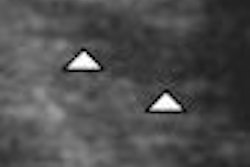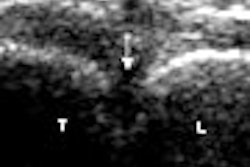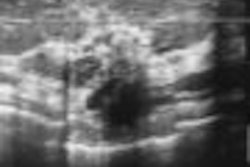While ultrasound can handily spot an abdominal aortic aneurysm (AAA), more sophisticated imaging is needed to plan treatments such as open surgery or endovascular therapy, according to a presenter at the 2008 International Symposium on Endovascular Therapy (ISET) meeting in Hollywood, FL. The question is: What role do other modalities play in assessing AAA?
That may depend on how the AAA is diagnosed and how it's treated. Many patients would prefer endovascular repair over a major surgical procedure, but the anatomy of the aneurysm makes endografting difficult or impossible in many cases, explained Dr. Bart Dolmatch, chief of interventional radiology at the University of Texas Southwestern Medical Center at Dallas. The right type of imaging study can make a world of difference in how AAA is managed.
"Ultrasound is proven as a cost-effective screening tool for abdominal aortic aneurysms; but while ultrasound images can show you the aneurysm, ultrasound won't tell you about anatomy," he said.
For that, Dolmatch recommended CT angiography (CTA) or MR angiography (MRA). In his talk, Dolmatch highlighted the advantages of CTA:
- Speed (an entire examination can be completed in 10 minutes)
- Low cost, especially compared to MRA
- Readily available modality
- High spatial resolution
- Quality imaging of calcium plaques
- Can be used safely with pacemakers and other implanted cardiac devices (an important consideration in an older patient population)
However, Dolmatch noted that MRA may trump CTA in the minds of some doctors and patients because there's no radiation and the MR contrast agent used for AAA is considered safer. There is also the issue of the overuse of CT in the U.S., and the link between radiation exposure and cancer rates, Dolmatch added.
Instead, some prefer to follow up on complications associated with AAA repair with ultrasound (checking for sac size, endoleaks), MRA (sac size, anatomical changes, endoleaks), or plain film (endograft structure, endograft migration). One study suggested that MRA was more sensitive than CT for detecting endoleaks, with MRA detecting 23 of 35 endoleaks, compared with 11 of 35 found with CTA, Dolmatch stated (European Journal of Vascular and Endovascular Surgery, October 2006, Vol. 32:4, pp. 361-365).
By Edward Susman
AuntMinnie.com contributing writer
February 5, 2008
Related Reading
CT angiography trumps DSA in renal artery stenosis, says ISET speaker, January 26, 2006
Faster exam time gives CTA a leg up on MRA for peripheral vascular disease, January 19, 2005
CTA serves as sole pre-op imaging for AAA endograft patients, March 30, 2003
Copyright © 2008 AuntMinnie.com



















